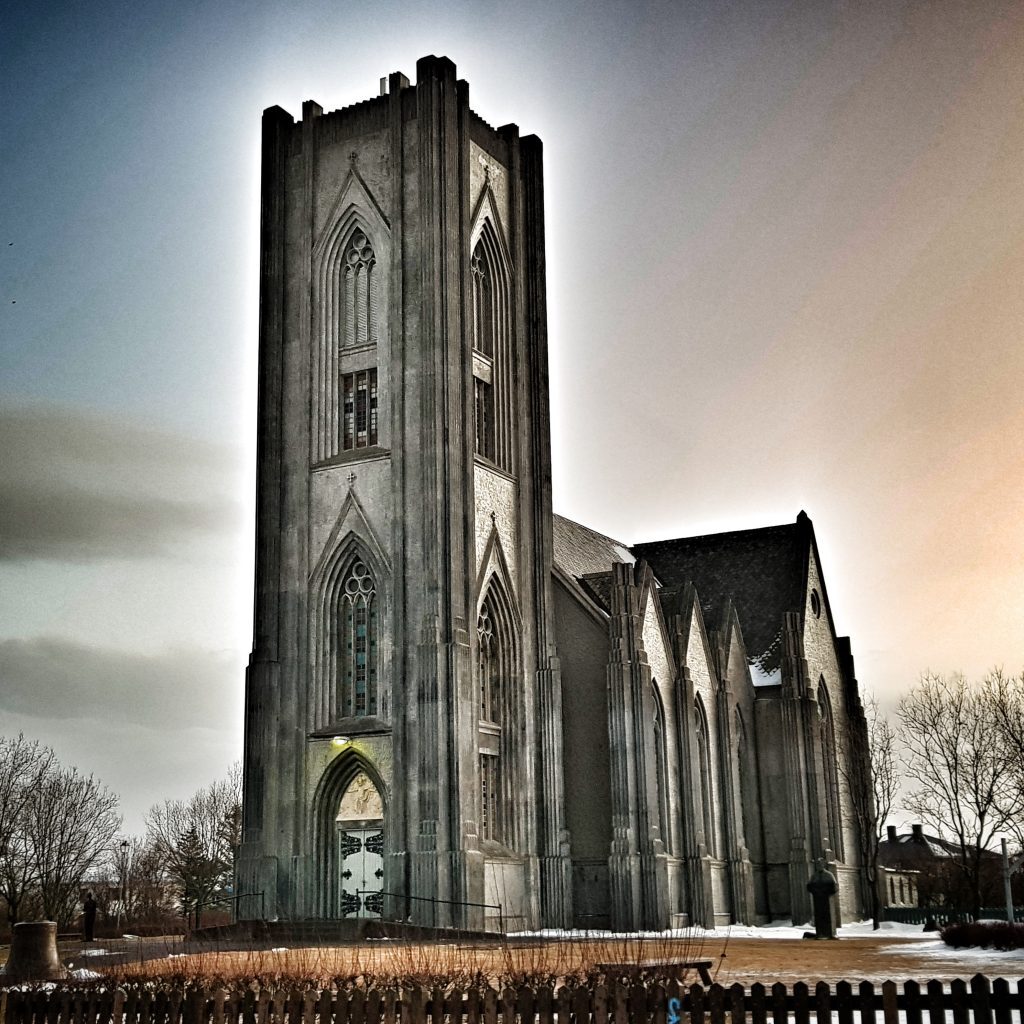A classical concert well worth attending will take place on January 20th, 21:00 (9 PM) at Landakotskirkja, the Catholic Cathedral in Reykjavík, when the Icelandic chamber choir Hljómeyki will perform one of the most interesting choral works of the 21st century to date, Path of Miracles by Joby Talbot. Hljómeyki Chamber Choir is one of Iceland’s most established and renowned choirs, with several recordings to its name – all available on Spotify.
Subscribe to my newsletter for exclusive discount codes that will give you savings on 150 Iceland tours and travel services.
Subscribe to the Stuck in Iceland newsletterReceive exclusive promo codes for tours, car rental, camper van rental, and outdoor clothing rental. Get occasional updates about new content. I will never give your data to a third party without consent.
Thank you
Jon Heidar, Editor of Stuck in Iceland Travel Magazine

Inspired by the Camino de Santiago
Path of Miracles is a choral work for seventeen voices by British composer Joby Talbot. A pilgrimage in the composition Path of Miracles is a journey. The four movements (Roncesvalles, Burgos, León, and Santiago) bear the names of the four main posts along the Camino de Santiago or Jacob’s Trail. This is one of the most taxing pilgrimage routes in Roman Catholic tradition. Path of Miracles uses selections from the Codex Calixtinus, Miragres de Santiago, and Roman Catholic liturgy. The choral work also incorporates musical styles from the Taiwanese Bunun people to the pilgrim’s hymn Dum Pater Familias. It is sung in Greek, Latin, Spanish, Basque, French, English, and German. Robert Dickinson is the librettist.
Path of Miracles was commissioned by the renowned chamber choir Tenebrae.
About the musical pilgrimage that is Path of Miracles
This is how the composer Joby Talbot describes the choral work:
‘Path of Miracles is a musical pilgrimage that has been three and a half years in the making. After Gabriel Crouch (of Tenebrae) had told me of his and Nigel Short’s ideas for a new piece about the medieval pilgrimage to Santiago de Compostela, I was taken to a Tenebrae recording session at the Temple Church, where I was utterly bowled over by the sheer beauty of the sound of this unique choir.
A trip to northern Spain with my wife Claire and one-year-old son Maurice followed, and over ten magical days we visited many of the important points of the Camino, including four of its greatest churches: the abbey at Roncesvalles in the foothills of the Pyrenees, and the great cathedrals of Burgos, Leon, and Santiago itself. The impressions these places left on me became the basis for the musical structure of the work.
Back in England, I managed, with the help of The Poetry Society, to track down Robert Dickinson, whose poem ‘Proofs’ about medieval French saints I’d read some five years previously. He seemed to be the ideal man for the job and so it proved, as he constructed a libretto of inspired reflections on the pilgrimage juxtaposed with extant medieval texts. In sourcing the latter, Professor Jack Sage of King’s College, London was an invaluable help. Path of Miracles is dedicated to the memory of my father, Vincent Talbot, 1916-2005.’

How to find the Catholic Cathedral in Reykjavik and get tickets
The concert venue, the Catholic Cathedral in Reykjavík has excellent acoustics, besides having a lot of atmosphere fitting for the performance of this amazing music. It is located on a hill, just up the road from the city center.
The ticket desk will open an hour before the concert. The ticket desk is located in a building behind the Cathedral – pass the Cathedral on the right-hand side. Admission is 3.500 Icelandic Krona. This is approximately €25 or $28. Credit cards or debit cards are welcome. After all, this is Iceland.
Path of Miracles reviewed
‘ …dramatizes a religious pilgrimage to Santiago de Compostela, in Spain, with passages in English, Galician and Latin; juxtapositions of intense serenity and celebratory robustness; and an ecstatic finale that includes a processional by the choir through the church.
Allan Kozinn, New York Times, 08/11/2011
At over an hour, this is Talbot’s longest single work to date. In its distinctive style, although using elements that are recognizably his (particularly passages that set up a minimalist repetitive rhythm overlaid with a soaring, slower melody), it is a major statement and supremely assured. Tenebrae – which has already recorded it for release later in the year – has surely got a major hit; I would go as far to suggest that Talbot’s “Path of Miracles” is to the first decade of the 21st-century what Arvo Pärt’s “Passio” was twenty years earlier.
Nick Breckenfied in Classicalsource.com, 2005




